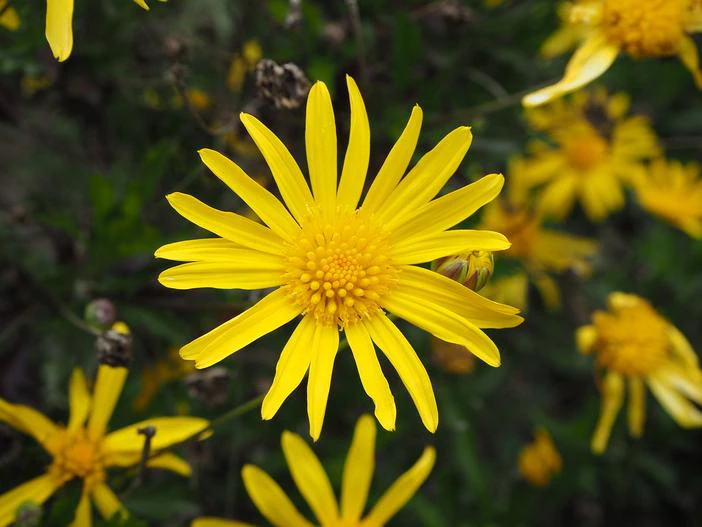Bull’s Eye
(Euryops chrysanthemoides)
Bull’s Eye (Euryops chrysanthemoides)
/
/

Teresa Grau Ros
CC BY-SA 2.0
Image By:
Teresa Grau Ros
Recorded By:
Copyright:
CC BY-SA 2.0
Copyright Notice:
Photo by: Teresa Grau Ros | License Type: CC BY-SA 2.0 | License URL: https://creativecommons.org/licenses/by-sa/2.0/ | Uploader: tgrauros | Publisher: Flickr





























































Estimated Native Range
Climate Requirements for Wake Forest, North Carolina
| This Plant | Your Site | Plant Suitability for Your Location | ||
|---|---|---|---|---|
| • Precipitation | 9" - 167" | 45" | Aquatic | Aquatic |
| • High Temp. | 68°F - 94°F | 90°F | Your summer temperatures are normal for this plant. | Excellent |
| • Low Temp. | 20°F - 69°F | 28°F | Your winter temperatures are normal for this plant | Excellent |
This plant may not grow well at your location - your precipitation is too high.
Summary
Euryops chrysanthemoides, commonly known as Bull’s Eye, is an evergreen subshrub native to the open scrublands and rocky slopes of South Africa, particularly in the Western Cape. It typically grows to a height of 0.5 to 2 meters and is densely branched with a leafy appearance. The leaves are dark green, glossy, and deeply dissected, giving a fine-textured look to the foliage. From summer to fall, it produces bright yellow, daisy-like flowers that are quite showy and attract pollinators.
Bull’s Eye is valued for its long blooming period and vibrant yellow flowers that can add a splash of color to any garden. It is often used in borders, as a ground cover, or in container plantings in warm climates. This subshrub is drought-tolerant once established, making it suitable for xeriscaping and low-water gardens. It thrives in full sun and requires well-drained soil. While generally low-maintenance, it may require occasional pruning to maintain its compact form and to encourage more prolific blooming.CC BY-SA 4.0
Bull’s Eye is valued for its long blooming period and vibrant yellow flowers that can add a splash of color to any garden. It is often used in borders, as a ground cover, or in container plantings in warm climates. This subshrub is drought-tolerant once established, making it suitable for xeriscaping and low-water gardens. It thrives in full sun and requires well-drained soil. While generally low-maintenance, it may require occasional pruning to maintain its compact form and to encourage more prolific blooming.CC BY-SA 4.0
Plant Description
- Plant Type: Shrub
- Height: 3-5 feet
- Width: 3-6 feet
- Growth Rate: Moderate
- Flower Color: Yellow
- Flowering Season: Summer, Fall
- Leaf Retention: Evergreen
Growth Requirements
- Sun: Full Sun
- Water: Low, Medium
- Drainage: Fast
Common Uses
Bee Garden, Bird Garden, Butterfly Garden, Groundcover, Low Maintenance, Showy Flowers, Street Planting
Natural Habitat
Native to the open scrublands and rocky slopes of South Africa
Other Names
Common Names: African Bush Daisy, Margeritbusksköna
Scientific Names: Euryops chrysanthemoides, Gamolepis chrysanthemoides, Steirodiscus chrysanthemoides
GBIF Accepted Name: Euryops chrysanthemoides (DC.) B.Nord.